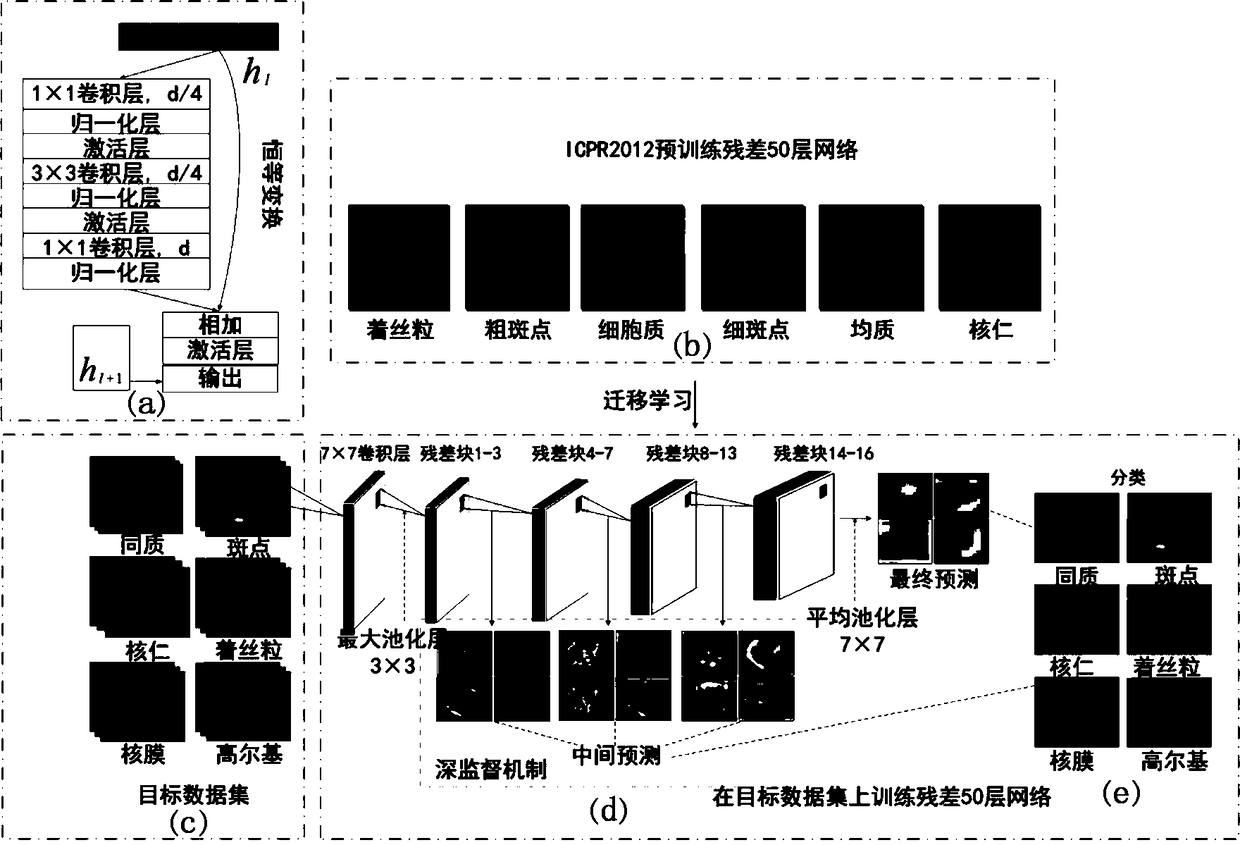Cell classification method and system based on deep residual network
A cell classification and network technology, applied in the field of medical image processing, can solve the problems of easy overfitting, low accuracy, affecting classification accuracy, etc., to avoid overfitting, reduce workload, and solve data set bias. small effect
- Summary
- Abstract
- Description
- Claims
- Application Information
AI Technical Summary
Problems solved by technology
Method used
Image
Examples
Embodiment Construction
[0045] In order to make the object, technical solution and advantages of the present invention more clear and definite, the present invention will be further described in detail below with reference to the accompanying drawings and examples. It should be understood that the specific embodiments described here are only used to explain the present invention, not to limit the present invention.
[0046] The indirect immunofluorescence (IIF) detection technology of HEp-2 cells is mainly used for the analysis of nuclear antibody (ANA), which is derived from human epidermal cells and used for the diagnosis and treatment of some important autoimmune diseases. For example, systemic rheumatic diseases, multiple sclerosis, drug-induced lupus erythematosus, systemic lupus erythematosus, and diabetes. Since HEp-2 cells have a high ability to divide, they produce a large amount of antigens. Experts usually use fluorescent microscopes for artificial nuclear antibody inspection, but large-s...
PUM
 Login to View More
Login to View More Abstract
Description
Claims
Application Information
 Login to View More
Login to View More - R&D
- Intellectual Property
- Life Sciences
- Materials
- Tech Scout
- Unparalleled Data Quality
- Higher Quality Content
- 60% Fewer Hallucinations
Browse by: Latest US Patents, China's latest patents, Technical Efficacy Thesaurus, Application Domain, Technology Topic, Popular Technical Reports.
© 2025 PatSnap. All rights reserved.Legal|Privacy policy|Modern Slavery Act Transparency Statement|Sitemap|About US| Contact US: help@patsnap.com



